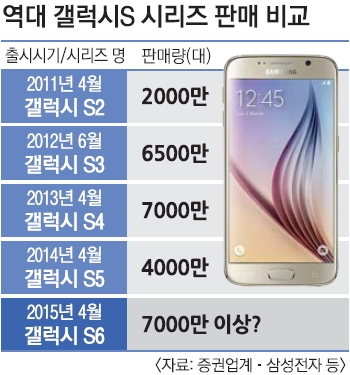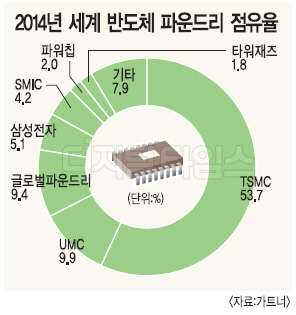퀄컴 주가가 약세를 면치 못하고 있는데요. 이후 먹거리를 아직 못찾고 있는것으로 보이는데, IoT시장이 향후 5년간 엄청난게 크게 성장한다는 예상에 따라 모든 노력을 집중할것이라는 뉴스입니다. 향후 5년간 $5 trillion까지 성장한다고 하니 10-20%만 먹어도 충분할것 같습니다. IoT시장은 한 회사가 독점하기는 어려운 시장이지요.
Qualcomm Targets The Internet of Things Sector Full Force
Leading mobile chipmaker Qualcomm recently provided guidance on how big the Internet of Things (IoT) sector is for the company. The company said it made $1 billion in revenue last year on chips used in a variety of city infrastructure projects, home appliance, cars and wearables. There were 120 million smart home devices shipped with Qualcomm chips in them last year. In addition, there are 20 million cars equipped with its chips, and Qualcomm silicon is used in 20 types of wearable devices. Even though the company makes the most money selling the wireless chips and processors for a large share of the smartphone market, it expects about 10% of its chip division revenue to come from non-smartphone devices in 2015.
In the semiconductor and telecom industries, along with Qualcomm, other major IoT players are AT&T, Cisco, ARM Holdings, Intel, and Samsung Electronics. Qualcomm doesn’t break out its IoT revenue (like Intel does) so we don’t know the precise size of the company’s IoT offering right now. But that doesn’t mean it’s not positioning itself in the space
In this article, we discuss the growth potential of the IoT segment and how Qualcomm is adapting its business model to accommodate this major trend.
Our price estimate of $71 for Qualcomm is marginally higher than the current market price.
A Perspective On The Internet Of Things: Sizing Up The Opportunity
As broadband Internet becomes more widely available, the cost of connecting things is decreasing. More devices are being created with wifi capabilities and censors built into them, technology costs are going down, and smart phone penetration is sky-rocketing. All of these things are creating a perfect storm for the IoT segment. Simply put, IoT is the concept of basically connecting any device with an on and off switch to the Internet and, by extension, to each other. This includes everything from coffee makers, washing machines, headphones, lamps, wearable devices and almost anything else you can think of. This also applies to components of machines. The IoT revolves around increased machine-to-machine communication; it’s built on cloud computing and networks of data-gathering sensors. It offers mobile, virtual, and instantaneous connection.
The global IoT market is expected to grow by more than $5 trillion over the next six years, according to research firm International Data Corporation. IDC estimates the global IoT market will reach $7.1 trillion by 2020, as people around the world – and particularly in developed nations – develop an affinity for full-time connectivity. Economic value-add (which represents the aggregate benefits that businesses derive through the sale and usage of IoT technology) is forecast to amount to $1.9 trillion across sectors by 2020. The verticals that are leading IoT’s adoption are manufacturing (15%), healthcare (15%) and insurance (11%).
For semiconductor companies, IoT is a high-volume, low-revenue opportunity. Since, the competition is high, as almost all the companies are looking forward to this new segment, the price war is anticipated. Companies would be playing on the volumes by collaborating with high end brands and customizing them accordingly. To grow and increase their share of the IoT opportunity, chip companies will have to differentiate their product offerings. IoT will therefore drive product marketing managers in the semiconductor industry to focus on innovation targeting end product features and on new ways to sell as the primary means to differentiate their offerings targeting the IoT market.
Qualcomm Marches Forward Into The Internet Of Everything
The largest growth opportunity for Qualcomm over the next five to ten years is in the IoT segment, in the company’s view. We believe that Qualcomm is positioned advantageously to profit from this emerging industry. Consider our reasoning as follows:
Qualcomm has made strides to leverage the Internet-of-Everything (IoE) by implementing its technologies in automobiles, homes, cities, wearables, and integrated devices. The company acquired Cambridge Silicon Radio in 2014 for $2.5 billion. It is a UK-based semiconductor company that makes Bluetooth and wireless radio frequency devices (i.e., radios) for machine-to-machine communication. This acquisition isexpected to drive the Qualcomm’s growth by 8% to 10% in the coming years by fortifying its position in providing critical solutions for the IoT market.
Qualcomm is using much of the same technology it puts into phones in IoT devices. It’s modifying its Snapdragon processors for mobile phones, for example, for use in automobiles and smartwatches. To date, the company has invested a total of $33 billion in research and development aiming to bring together technologies. Within IoT, the company is looking to connect everything from wearables and cars to lightbulbs and health care devices. Qualcomm is beefing up its own IoE tech industry partner ecosystem with six new integrations for cloud and software services. Among them are LogMeIn’s Xively, an Internet of Things platform catering to enterprises building connected products, and Proximetry, an IoT performance management provider.
It makes sense that Qualcomm commands so dominant a position in the market, given its strengths in wireless communications. The company holds a large share of global wireless baseband revenue, and it only seems natural to parlay its strong wireless chip business into IoT. Last year Qualcomm turned over its AllJoyn protocol to the Linux Foundation and set up the AllSeen Alliance. The basis of the alliance is for tech companies to use the standards Qualcomm created with AllJoyn to allow different companies to connect their IoT devices to each other. The alliance includes 50 companies in all right now.
Hardware competition among manufacturers preparing IoT products will be fierce, so Qualcomm will have a number of competitors to deal with in the coming years. Unlike the smartphone market where Qualcomm had a first-movers advantage, we don’t believe one – or a small group of companies – will be able to snag control of the IoT market. Qualcomm, however, can look forward to a strong position.
http://www.forbes.com/sites/greatspeculations/2015/07/06/qualcomm-targets-the-internet-of-things-sector-full-force/
'IT이야기' 카테고리의 다른 글
| 싸이노젠 - Cyanogen (0) | 2015.07.10 |
|---|---|
| Amzon Prime Day 7/15 (0) | 2015.07.08 |
| AMD 결국 청산절차를 밟을까 (0) | 2015.07.08 |
| 알루미늄 vs 마그네슘, IT를 뒤흔들 소재 경쟁 (0) | 2015.07.08 |
| Q1 2015 미디어텍 LTE share 두자리수 상승 (0) | 2015.07.08 |














































